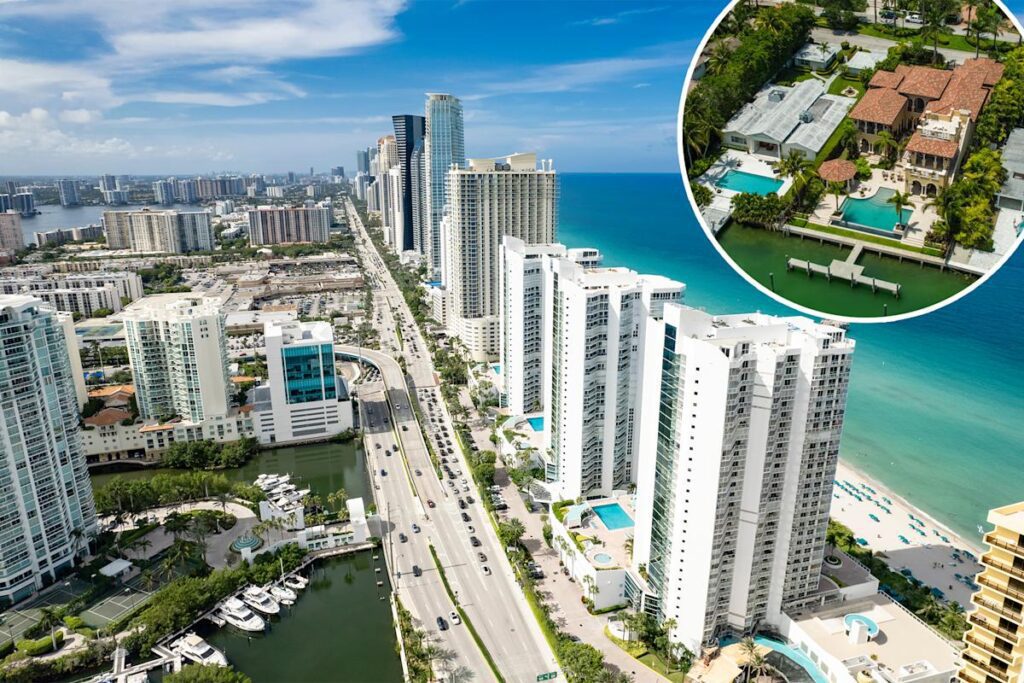South Florida Real Estate Market Faces Extended Slowdown Amid Condo Crisis and Rising Costs
South Florida’s real estate landscape continues to grapple with subdued home sales, signaling a persistent market rebalancing that experts attribute to a combination of higher interest rates, increased insurance premiums, and regulatory changes. According to recent data compiled by the Miami Association of Realtors, the dollar volume of home sales across Miami-Dade, Broward, and Palm Beach counties fell sharply, reflecting ongoing challenges within the region’s housing market.
Market Overview: Declining Sales and Volume in South Florida
- May Sales Volume: $5.6 billion, down from $6.1 billion the previous year.
- Miami-Dade Sales: Dropped by 20% year-over-year.
- Condo Sales: Particularly hard-hit, with a 25% decline in Miami-Dade and 24% in Broward County.
- Broward County: Overall sales fell by 18%.
- Palm Beach: Recorded a 12% drop in sales.
This decline underscores the reality facing many buyers and sellers in one of the nation’s most dynamic housing markets. While luxury properties such as waterfront villas and high-end penthouses maintain steady demand, the middle market, especially condominiums, is struggling to keep pace.
Condo Market Challenges: Post-Surfside Collapse Effects and Rising Costs
The condominium sector in South Florida faces unprecedented hurdles beyond just market forces:
- Increased Insurance Costs: Rising premiums have deterred many potential buyers.
- Maintenance and Upkeep Fees: New regulations implemented after the 2021 Surfside condominium collapse have raised the cost of ownership, making older condo units less appealing.
- Buyer Preferences: Prospective buyers are favoring newer, resilient properties in prime locations, steering away from aging buildings with unknown structural or financial risks.
Miltiadis Kastanis of Compass highlights a generational shift: “There’s pre-COVID and post-COVID. And there’s pre-Surfside collapse and post-Surfside collapse. Those are two monumental happenings that have adjusted our real estate market because people are less inclined to buy in an older, aging building.”
These factors compound to create a crisis in condo sales, significantly impacting the overall market sentiment.
Resilient Luxury Segment Amidst Broader Market Softening
Despite the broader slowdown, luxury homebuyers remain a resilient segment of the market. High-net-worth individuals continue to invest in premium waterfront villas and upscale penthouses, sustaining a portion of the market that exhibits steady sales volumes.
This segmentation illustrates a polarized South Florida market:
- Luxury Homes: Stable demand driven by cash-rich buyers.
- Middle-Market Condos: Sluggish sales exacerbated by financial and regulatory pressures.
Single-Family Homes Encourage Optimism: Signs of Normalization
While condo sales falter, the single-family home market across Miami-Dade shows some promising signs:
- Price Growth: The market experienced a 4% increase in median home prices.
- Sales: Despite price gains, transactions declined, reflecting cautious buyer behavior.
- Median Price: Rose from $650,000 to $675,000, marking over 13 years of consecutive price appreciation since December 2011.
Johnny DelPrete of Douglas Elliman describes this trend as "market normalization" following a pandemic-driven surge. “We had that huge surge from the pandemic, then went from no inventory to now having months and months of inventory,” a sign that supply and demand are beginning to reach equilibrium.
Government Response: Legislative Relief for Condo Associations
In an effort to alleviate pressures on the condo market, Florida Governor Ron DeSantis recently signed legislation aimed at easing fees and regulatory burdens on condominium homeowner associations. This policy change is expected to provide some relief, potentially facilitating easier sales and greater market confidence moving forward.
What Buyers and Sellers Need to Know: Key Takeaways
For Buyers:
- Be cautious of older condominium units with potentially high maintenance costs and regulatory fees.
- Focus on newer, well-maintained properties in prime locations for greater resale value and stability.
- Interest rates and insurance premiums remain significant factors influencing affordability.
For Sellers:
- Pricing adjustments may be necessary to reflect current market realities.
- Luxury properties continue to attract buyers who can transact with less financing dependence.
- Older condos may require additional incentives or price flexibility to compete.
Conclusion: A Polarized South Florida Real Estate Market in Transition
South Florida’s real estate market exhibits complex dynamics shaped by economic factors, regulatory changes, and buyer preferences:
- Persistent slowdowns in condo sales amid rising costs and safety concerns.
- Resilient luxury home segments maintaining steady demand.
- Signs of normalization in the single-family home market, particularly in Miami-Dade.
- Legislative efforts aimed at stabilizing the condo market.
This evolving environment calls for careful navigation from both buyers and sellers to successfully engage in one of the country’s most diverse and vibrant real estate markets.
For more updated insights into South Florida’s housing trends and real estate resources, visit the Miami Association of Realtors and Douglas Elliman. To explore mortgage rate impacts and insurance options influencing the market, check out Bankrate and The Insurance Information Institute.
Related Topics
- Impact of Rising Interest Rates on Home Affordability
- Condominium Regulations and Homeowner Association Rules
- Real Estate Market Recovery Post-Pandemic
Stay informed with the latest real estate updates to make savvy decisions in the South Florida market.


